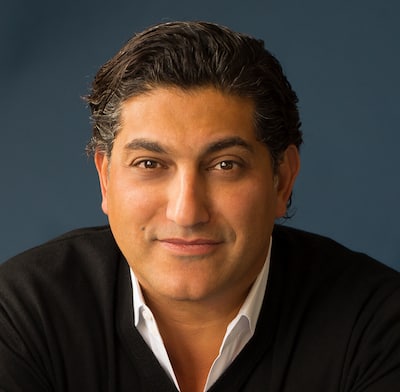Hayley McDowell: How can artificial intelligence (AI) be implemented to improve efficiency on trading desks? Will AI ever replace human traders?
Alfred Eskandar: You don’t need AI to replace traders. In fact, with AI and the simple automating routing of orders seen today you already don’t need humans to touch the orders. But the reality is that as markets get more complex and asset managers look to other regions to trade, you will need human traders, but humans will also need machines. Back in the days when markets weren’t moving in milliseconds, a human could perfectly handle the workload on their own. But today, that’s simply not possible. Instead, the traders are being supported—not replaced—by very sophisticated technology. We are seeing anywhere between 15%-65% of the total orders on the blotter being auto-executed without the intervention of humans, and we are also seeing those exact same humans not losing their jobs. Instead, they are getting more involved in analysis and handling more difficult orders. I believe this is where traders will be spending more and more time in future.
At Portware, we automate a number of manual steps, integrating predictive analytics and AI-driven workflows built on top of data warehouses with advanced reporting capabilities. One of our tools utilises hundreds of points of information—including real-time market data feeds, proprietary data, web crawling, social media listening and more—to essentially do what a human trader would do if he or she had all the time in the world to dedicate to one order.
If you imagine the workflow of a particular order, the trader immediately has a reaction and can intuitively tell if it’s a difficult order, and then refines that assessment over time. With AI, every single order that hits the blotter is analysed automatically. It becomes possible to gather and filter reams of relevant information in a split second, for every order, and for a recommendation to go straight to the trader to edit, accept the recommendation or reclaim the trade. All of the repetitive heavy lifting and standardised steps traders go through for each order can be handled via AI-infused workflow automation. And this isn’t some distant future—this is the reality of how AI is implemented across thought-leading trading desks in the markets today. It is saving traders countless hours of tedious work that does not contribute to performance, so that they can focus their energy in ways that do.
HM: How can technology help firms with MiFID II compliance?
AE: If you think about MiFID II, it’s going to create a tremendous burden for institutions to be able to justify decisions and track actions. It’s really an administrative burden market participants will have to carry and when you think of it that way, you can see how technology can be incredibly helpful in dealing with these requirements. The way we see it is, “How do we help institutions live within this framework, deliver proof they are complying with it and at the same time, not have waste time on activities that don’t produce performance?”
This touches on passive vs. active management too because the more time active managers spend on administrative activities away from finding alpha, it makes them less competitive. It’s our job to take these obligations and compliance issues and automate as much as possible, to alleviate the traders and the firms from having to manually comply with them. We use a combination of reporting tools, visualization capabilities and a data warehouse to essentially capture all of the decisions and routes to create the reports—the paper trail, so to speak—that help institutions comply with MiFID II, without having to go through a tremendous amount of repetitive manual steps every time.
HM: What difficulties can clients face when integrating OMS and EMS systems?
AE: Clients are very supportive of combining OMS and EMS because they are the ones that feel the pain and who are most invested in growing their business. Most times when an EMS is plugged in on top an existing OMS, the underlying elements are no longer fit for purpose.
The reality is that the OMS was invented first, in response to a need the market recognized in a voice-driven, manual world, to handle portfolio managers’ orders and create a view on how to manage the buys and sells of a particular fund. As the markets became more electronic, more trade data was created and more market data had to be consumed, so things needed to be faster. The EMS for the most part were broker-sponsored or broker-owned and often given to clients for free to harness commissions. It was not uncommon for a buy-side firm in the early 2000s to have five, six or even seven different EMSs on their desk.
Independent FinTech firms then aggregated all of those into one EMS, allowing the systems to be broker-neutral. As the institutions got larger, they needed an EMS that could keep up with their growth and the expanding complexity of the markets they were dealing in. When you look at the US market in the late 1990s there was a duopoly between the New York Stock Exchange and Nasdaq. If you fast-forward to today, there are around 40 dark pools and 13 different exchanges in the US alone. The technology needed to grow and be flexible with the markets’ advancement. A lot of these broker-owned EMSs simply couldn’t keep up.
